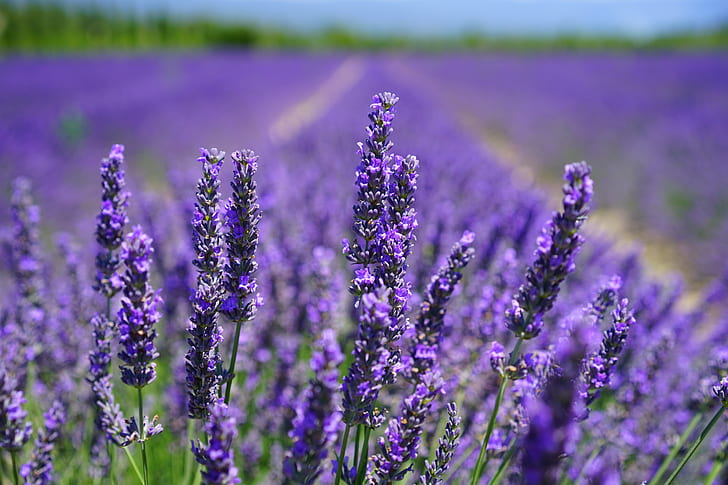Lavender is a popular herb known for its fragrant aroma and beautiful purple flowers. It is native to the Mediterranean region, but is now widely cultivated in many parts of the world. Lavender is often used in perfumes, soaps, and other beauty products due to its calming and relaxing properties. It is also used in cooking and as a natural remedy for anxiety and insomnia. Lavender is also prized for its ornamental value and is often used in gardens and as a natural border for yards and walkways. Overall, lavender is a versatile and beloved plant that brings a touch of beauty and relaxation to any space. Growing lavender from seeds can be a rewarding and fulfilling experience, but at the same time it is tricky too. Let’s discuss how to grow lavender from seeds?

Starting from Seeds
Before starting, it is important to choose the right type of lavender for your growing conditions. English lavender (Lavandula angustifolia) is the most popular and fragrant variety, and it is suitable for a wide range of climates. However, if you live in a warmer climate, you may want to consider French lavender (Lavandula dentata) or Spanish lavender (Lavandula stoechas), which are more heat-tolerant.
Once you have chosen the right type of lavender, the next step is to prepare the seeds for planting. Lavender seeds must be cold stratified. First, we must understand what cold stratification is? Cold stratification is a technique that is often used to encourage the germination of seeds. This process involves exposing the seeds to cold and moist conditions for a period of time, which simulates the natural winter conditions that many seeds require in order to germinate. By exposing the seeds to these conditions, the seed’s natural dormancy is broken, allowing it to germinate and grow when the conditions are right.
Lavender seeds are very small and should be surface-sown, which means that they should be placed on top of the planting media rather than buried. To do this, you may use sterile growing medium, such as vermiculite or perlite or can germinate the seeds using paper towel, then sprinkle the seeds evenly over the surface of the medium or moist paper towel. Do not press the seeds down or cover them, as this can prevent them from germinating. Place the seeds in a container, such as a plastic bag or a small container, and seal it tightly.
Next, place the container in the refrigerator or another location with temperatures between 0.5 to 4 degrees Celsius (33 and 41 degrees Fahrenheit). Keep the seeds in this location for four to six weeks, making sure to check on them periodically to ensure that the growing medium stays moist.
After the stratification period is complete (which is normally 4 to 6 weeks), remove the seeds from the refrigerator and place them in a warm, sunny location, such as a windowsill or greenhouse. Ideal temperature for germination of lavender seeds is 21 degrees Celsius (70 degrees F). Keep the soil moist and wait for the seeds to germinate, which can take anywhere from two to four more weeks.
Once the seedlings have emerged, provide them with the right growing conditions to help them thrive. Lavender plants prefer well-draining, sandy soil that is slightly alkaline, so it may be necessary to adjust the pH of the soil with the addition of lime. They also require plenty of sunlight, so choose a sunny location for planting.
When the seedlings are large enough to handle, carefully transplant them into individual pots or into the ground. Space the plants about 12 inches apart to allow for proper growth and air circulation. Lavender plants are relatively drought-tolerant, so water them sparingly and only when the soil is dry. Over watering can lead to root rot and other problems.
By going through the process of cold stratification, lavender seeds are given the best possible chance of germinating and growing into healthy plants. While this process may take a bit more time and effort, the resulting plants will be stronger and more likely to thrive in their new environment. With the right care and attention, lavender plants grown from stratified seeds can provide many years of enjoyment.
Watch The Video
How to Grow lavender from Seeds, how to plant lavender seeds, How to Sow lavender seeds, how to grow lavender plant, Grow Lavender at home, how to plant lavender seeds, How to Sow lavender seeds, how to grow lavender plant, grow lavender in pot, growing lavender from seed, how to grow lavender at home, lavender seeds how to grow, grow lavender indoors, grow lavender from cuttings, grow lavender in water, grow lavender from seed indoors, lavender click and grow, plants that look like lavender, click and grow lavender, taking care of a lavender plant, lavender tree care, true lavender seeds
